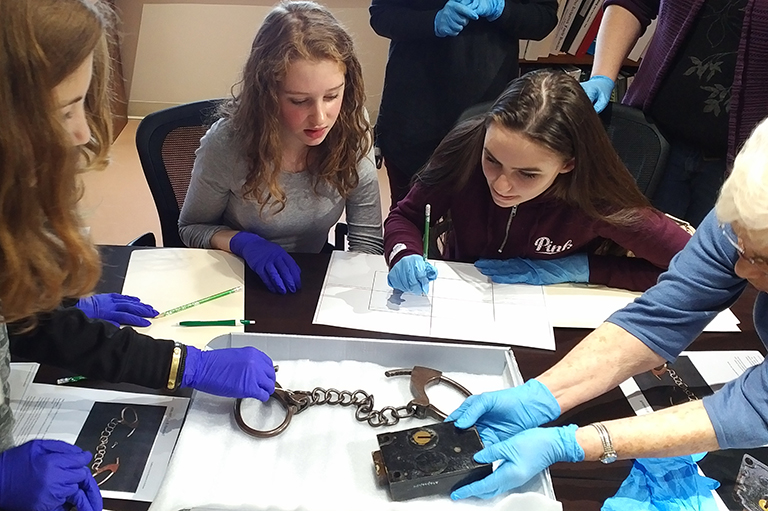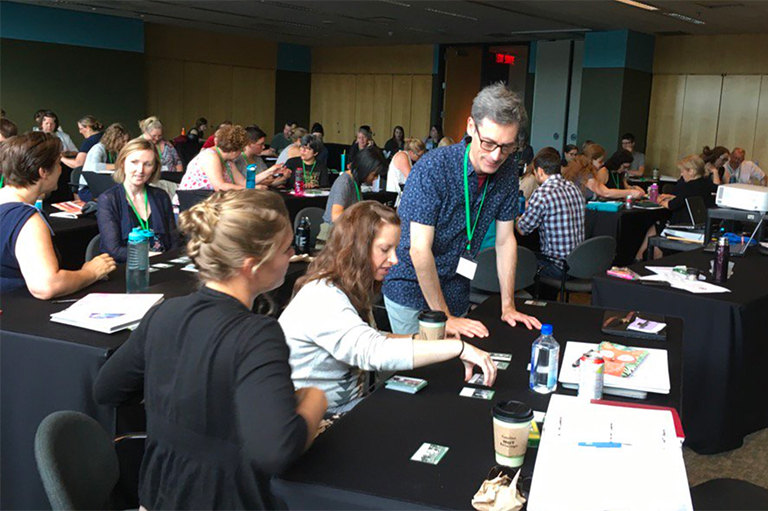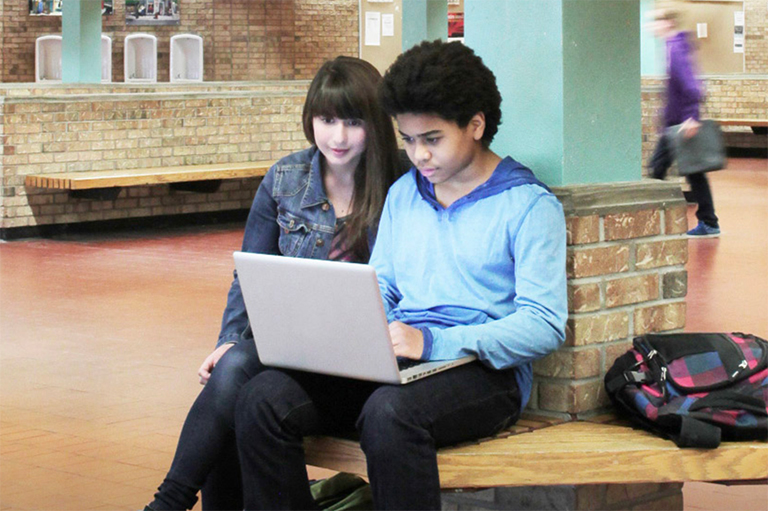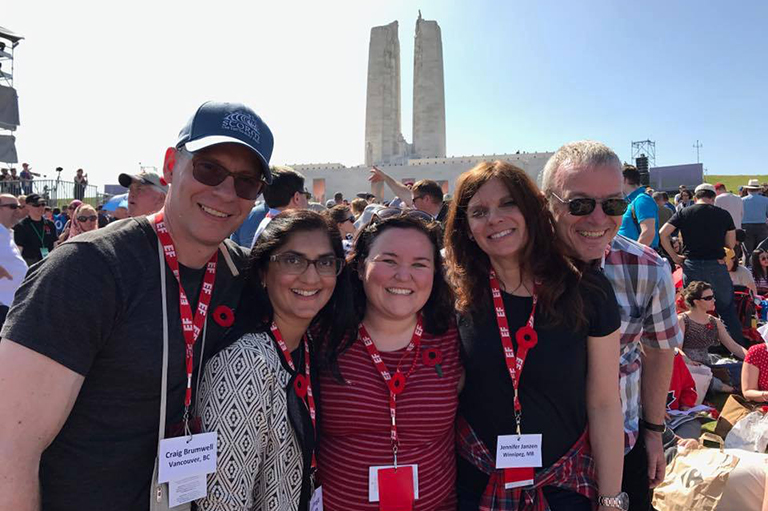Parallels in Teaching
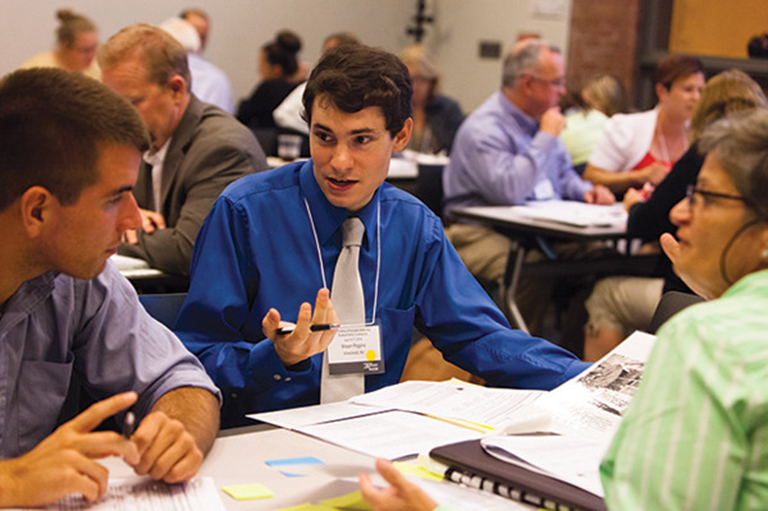
News reports show us that memories and events of the past continue to shape our society. Concepts of inclusion, minority rights, and free speech often intersect, if not clash, in public discourse. In July 2017, I was honoured to take part in a conference that deals with one of the most horrific episodes in world history: The Holocaust. The Arthur and Rochelle Belfer National Conference for Educators in Washington, D.C., takes participants on an intense journey through, and reflection about, the people and events of 1933–1945 and their continued impact on today’s society. Thanks to a generous scholarship from the Montreal Holocaust Museum I was able to attend this incredible education event.
Teachers who attend this conference come away with new understandings of the Holocaust, as well as new ways to facilitate learning with their students. The Museum provides many useful tools for teachers, including “Guidelines for Teaching about the Holocaust,” which outlines the ten concepts that provided the pedagogical foundation for the conference’s activities. The following is a look at three of the concepts that had the greatest impact on me, as well as a consideration of how these guidelines, or others, might be applied while addressing the history of Canada’s Indigenous peoples.
The conference taught me to stop describing people with just one label: participant, victim, collaborator, leader, follower, etc. During the Holocaust, individuals could be given any number of labels, depending on the events taking place, and the specific time of those events. Passive onlookers could become participants or collaborators; victims could become oppressors. Circumstances often changed rapidly, and individuals’ roles and actions changed given the circumstances. Was the civilian conductor of the train carrying Jews to the Terezin Ghetto merely a civilian, or was he a passive onlooker, a collaborator, or an active participant? Fluidity of experiences was more the norm than I had realized. Rare was the individual that did not act in a variety of ways between 1933 and 1945. Thousands of church goers became ardent Nazi supporters, while dozens of career Wehrmacht officers were prepared to sacrifice their lives to bring down Hitler’s regime. Clearly, roles changed during the twelve years of the Holocaust.
I also learned the importance of using accurate and appropriate language. For example, instead of referring to locations simply by the country’s name, it is important to clarify that areas controlled by German military or political institutions operated outside of oversight by the civilian population inhabiting the area. Thus, when describing the location of the Auschwitz-Birkenau camp, it is important to refer to it as being in “German-Occupied Poland,” not merely as “Poland.” Notwithstanding that significant portions of local populations may have supported German actions (such as Ukrainian peasants welcoming the German Wehrmacht at the onset of Operation Barbarossa) or even willingly collaborated with German Einsatzgruppen (Lithuanian paramilitaries in 1941), the majority of civilians under German authority lived that way unwillingly. It is imperative that teachers are precise in their use of language; not all Germans were Nazis, and not all French citizens were heroic members of the Resistance either. We should not shy away from describing events, locations, or people for what they were, and what they did, but we must not ascribe inaccurate characteristics to them.
Here is a recommended guideline that is brilliant in its simplicity: focus on the personal, not the group. Students’ eyes often gloss over when teachers talk about the loss of thousands of lives, or hundreds of thousands of lives, or millions of lives. Engagement is far greater when teachers relate stories of individuals, particularly when those stories are those of children and youth. Students, especially at the high school level, generally have a natural empathy for those suffering oppression and injustice. They will become emotionally involved when they can see even the tiniest bit of their own existence in the stories of Holocaust victims and survivors. This concept is borne out by the fact that thousands of students continue to willingly read The Diary of Anne Frank, a text simple in its construction yet so powerful in its effect on generations of youth. Keeping students involved with personal stories proves to be the most effective way of engaging students with what is often too horrible to contemplate otherwise.
During small group sessions, conference participants used primary evidence and a simple timeline activity to illustrate the breadth and diversity of Holocaust experiences and events. Groups were given information cards from the following categories: US/World Response; Propaganda; Laws and Decrees; and the Holocaust/World War II. The cards contained information about individuals whether victims, collaborators, or survivor’s stories; details about laws, policies, and edicts; and information about events such as the Reichstag Fire, Kristallnacht, and the liberation of the death camps. We were given four or five minutes to share the cards within the small groups and to make connections with other cards previously seen. At the end of the allotted time, the cards were placed on a whiteboard under the appropriate years. This gave an overview of the progression of Nazi ideology and its effects on the people of Europe, collectively and individually. A simple, but effective technique for making sense of a complex era.
As the conference continued, I thought about ways to incorporate the guidelines in another context. In Western Canada, the impact of colonialism is constantly with our students: in their schools, in their communities, and in many of their families. Perhaps these guidelines can guide teaching practices as we confront the many lasting effects of colonial structures.
So how might we adapt United States Holocaust Memorial Museum’s Guidelines for Teaching the Holocaust and Genocide for use in Canadian schools? Which guidelines can be applied when teaching about the cultural genocide against Canada’s Indigenous peoples perpetuated by successive governments, both Conservative and Liberal? What questions should students and teachers be asking?
- Define the terminology: Canada’s cultural genocide of Indigenous peoples must be recognized as such by students, teachers, and the larger community.
- Do not teach or imply that the Residential School System was inevitable: Was the reserve system inevitable? Did the “Pass System” have to occur? We cannot deny the fact the generation after generation of Canadian politicians and bureaucrats made conscious choices to deny Canadians the most basic of human rights. Why did they choose to create and follow these policies?
- Avoid simple answers to complex questions: A question such as “Why were Indigenous children ripped from their families to attend residential schools?” cannot, and should not, be answered with a one-sentence response. The effects of such trauma-inducing policies demand well-reasoned and articulated answers.
- Strive for precision of language: It is hard to believe, but in 2017 there are still teachers in classrooms that use the term “Indian” to describe Canada’s First Nations, Inuit, and Métis peoples. The term is now generally used only in very specific circumstances.
- Strive for balance in establishing whose perspective informs your study of the Holocaust: Too often Canadian history is told from the perspective of the “brave, hardy settler” that overcomes hardships such as severe weather and physical isolation to “claim” the land and make it “productive.” Obviously, this perspective disregards the history and culture of peoples that managed to build long-lasting communities in the very same locations.
- Avoid comparisons of pain: Educators can encourage students to look for policies or institutions that resulted in similar experiences for peoples elsewhere, but must not imply that any particular group suffered more than another. The study of genocide cannot be allowed to denigrate into a version of “oppression Olympics.” If handled with sensitivity and care, empathy for all of those that have suffered can be achieved.
- Do not romanticize history: This is the guideline that is perhaps least easily applied to Canadian Indigenous history in this context. Unlike the Holocaust, there are few stories of ordinary Canadians outside of Indigenous communities that spoke up against Canadian repressive institutions. Unfortunately, stories of heroic rescues, or of hiding of children, by non-Indigenous Canadians, are rare.
- Contextualize the history: The residential school system, the pass system, reserves: these did not happen in a vacuum. The choices made to create and perpetuate these institutions reflect what was currently acceptable among the dominant segments of the population. By examining who was making these decisions, and why, we can place the cultural genocide of our Indigenous peoples in its proper context.
- Translate statistics into people: As noted earlier, this concept resonated with me. Thankfully, we have stories of people that attended and survived the residential schools, stories that provide us with primary evidence as to the true extent and nature of the schools. Likewise, we have first-hand accounts of people that endured the pass system, or were denied the vote, and other basic rights, until late in their lives. Each time that we use an individual’s story to illustrate these injustices, rather than use than a chart or table, we employ a powerful tool that connects students with the past.
- Make responsible methodological choices: As suggested by the United States Holocaust Memorial Museum, topics such as genocide are ill-served by having students complete word searches or crossword puzzles. Teaching about cultural genocide in Canada must be done with critical thinking and higher-level questioning. It is crucial that all Canadian students are exposed to related content in the most respectful, empathetic manner possible.
The Belfer Conference was a wonderful opportunity to be immersed in an important topic, and to learn alongside colleagues from Canada, the United States, and Europe. The three days were intense, challenging, and often difficult. Any teacher with an interest in genocide education, whether they teach History, Social Studies, or English, should consider attending this conference. This is one of the most important learning opportunities that a history teacher can experience.
Themes associated with this article
Advertisement

